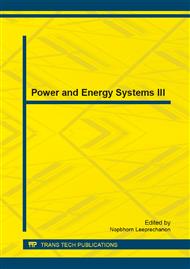p.118
p.123
p.128
p.135
p.143
p.147
p.153
p.162
p.169
Simulation on Building Energy Consumption for a Residential Building
Abstract:
A two floor residential building in Tianjin as the research object was studied in this paper. The software eQUEST was carried out to simulate residential buildings energy consumption, and to explore the annual total energy consumption of the residential building, which was influenced by air conditioning heating modes and the building orientations. The air conditioning and heating system modes used to simulate including the heat pump air conditioning, air conditioner & heat sink and radiant heating & heat sink. The simulated building orientations include east, west, south and north. The transformation of the sunshade direction could be obtained by changing the building orientation. The indoor design temperature in summer was set at 26°C, while winter design temperature was set at 18°C. As the result of the energy consumption simulation study showed that, the annual total energy consumption achieved the minimum when heat pump type air conditioning heating system was adopted. When the effected factors such as air conditioning heating system, indoor heat source condition, window size and some other factors which influenced energy consumption were constant, the simulation results might be found that the building orientation had a small influence on the building energy consumption.
Info:
Periodical:
Pages:
143-146
Citation:
Online since:
January 2014
Authors:
Price:
Сopyright:
© 2014 Trans Tech Publications Ltd. All Rights Reserved
Share:
Citation:


